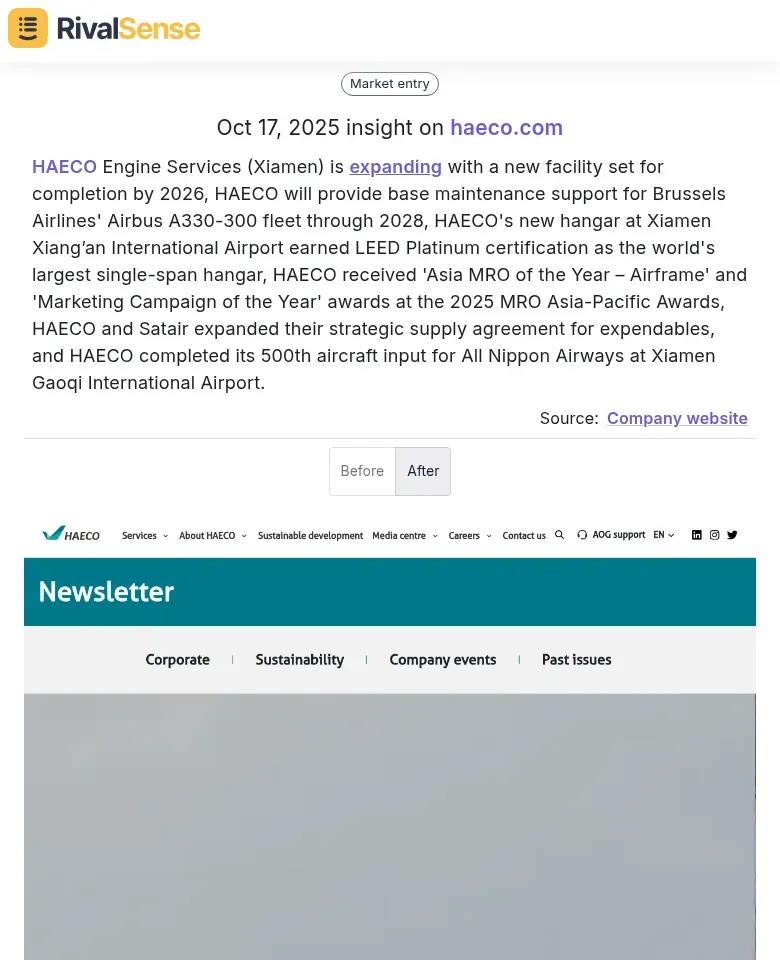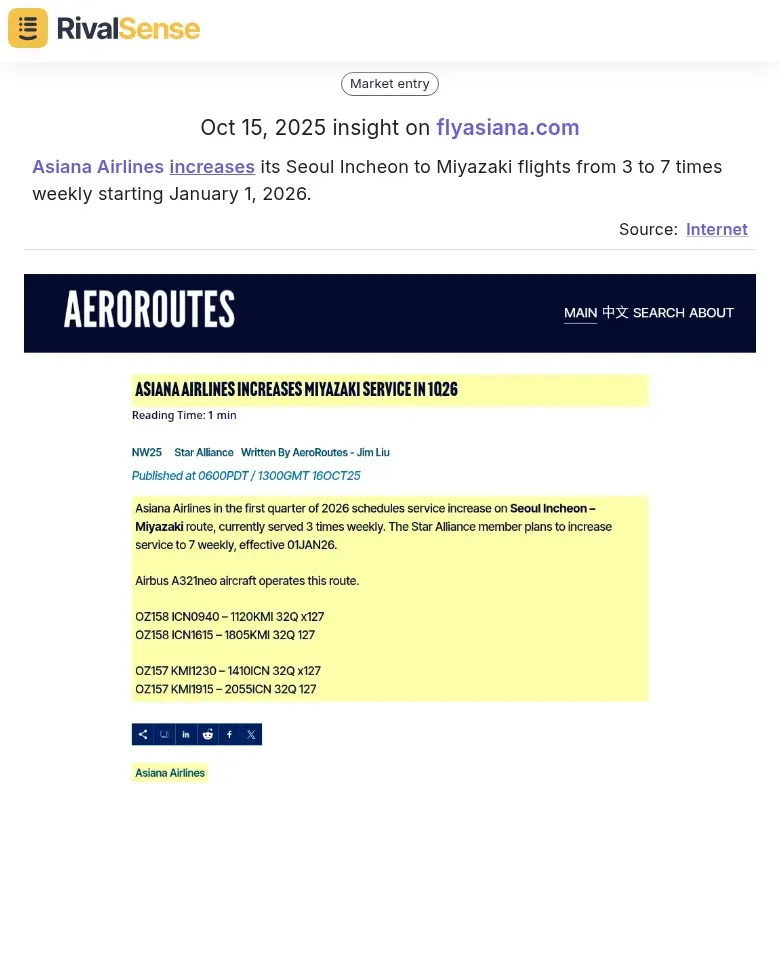Actionable Market Entry Strategies Using Competitor Insights
Market entry strategies are systematic approaches businesses use to launch products or services in new markets, crucial for sustainable growth and expansion. These strategies—from direct exporting to joint ventures—determine how effectively companies can capture market share and establish competitive positioning. Competitor insights provide the foundation for strategic planning by revealing market gaps, customer preferences, and competitive weaknesses. By analyzing competitors' pricing, marketing tactics, and customer feedback, businesses can identify underserved segments and avoid costly mistakes. For example, studying a competitor's failed product launch can highlight what features customers truly value.
Real-time data is essential for adapting to dynamic market conditions. Unlike static reports, real-time competitor tracking allows businesses to respond immediately to price changes, new product launches, or shifting consumer trends. Practical steps include: setting up alerts for competitor announcements, monitoring social media sentiment daily, and conducting quarterly SWOT analyses using fresh data. This proactive approach ensures strategies remain relevant and competitive in fast-moving markets.
Analyzing Competitor Expansion and Infrastructure Investments
Tracking competitor expansions and infrastructure investments offers a window into market dynamics and strategic priorities. By observing where competitors are building or upgrading facilities, you can gauge regional demand and identify optimal entry points. For instance, RivalSense insights revealed that HAECO Engine Services (Xiamen) is expanding with a new facility set for completion by 2026, secured long-term contracts like base maintenance for Brussels Airlines, earned LEED Platinum certification, and won industry awards. This type of insight is valuable because it highlights operational excellence, sustainability trends, and partnership stability, helping you benchmark your own expansions and avoid underinvesting in key areas.

Focus on three key areas to inform your market entry strategy:
- Facility Expansions: New warehouses, offices, or production sites signal growth opportunities. If a rival opens a distribution center in a region, consider entering before they solidify their presence.
- Infrastructure Certifications: Benchmarks like LEED reveal operational standards. Aim to match or exceed them to compete effectively.
- Long-term Contracts: Supplier agreements or joint ventures indicate market stability. If competitors have locked in key resources, you may need alternative partners.
Practical Checklist:
- ✅ Monitor public filings and news for expansion announcements
- ✅ Use tools like RivalSense to track certifications and awards
- ✅ Analyze contract durations to gauge commitment levels
- ✅ Map competitor growth patterns quarterly
Leveraging Competitor Route and Service Adjustments
Monitoring competitor route and service adjustments provides real-time intelligence on demand shifts and market saturation. These changes often reflect underlying customer behavior and regional economic trends, allowing you to spot opportunities or threats early. For example, RivalSense detected that Asiana Airlines is increasing its Seoul Incheon to Miyazaki flights from 3 to 7 times weekly starting January 1, 2026. This insight is valuable because it helps you assess demand levels, anticipate competitive responses, and identify underserved routes or seasons for your own entry.

Key areas to focus on:
- Frequency Increases: When competitors add flights or services weekly, it signals high demand but also potential oversaturation. Consider targeting alternative hubs or premium services.
- Seasonal Shifts: Reductions in off-peak routes can reveal niches, like adventure travel markets in winter.
- Regional Expansions: Gaps in competitor coverage, such as skipping the Nordics in a European launch, present prime entry points.
Actionable Tips:
- Use tools like RivalSense to monitor route changes monthly
- Map frequency patterns against market data to identify gaps
- Test responses with pilot programs before full-scale entry
- Adjust your offerings based on competitor service enhancements
Evaluating Competitor Relocations and Operational Shifts
Competitor relocations and operational shifts often signal deeper market challenges or opportunities, such as cost pressures or talent availability. Understanding the reasons behind these moves can help you avoid pitfalls and optimize your own strategy. RivalSense insights, for instance, showed that Citadel's founder Ken Griffin cited crime and taxes as reasons for shrinking its Chicago footprint, with employees relocating to Miami and New York. This type of insight is valuable because it alerts you to regional risks, cost-saving tactics, and talent market trends, enabling you to make informed decisions about your own locations and operations.

Focus on these aspects:
- Relocation Reasons: High crime, taxes, or regulations can indicate regional risks. Use this to negotiate better terms or avoid problematic areas.
- Footprint Reductions: Downsizing may reveal declining demand or inefficiencies. Analyze if you should fill the gap or exit too.
- Employee Redistribution: Shifts in staff locations highlight talent markets. Research local hiring trends to plan recruitment.
Practical Steps:
- Monitor relocation announcements and public records for underlying causes
- Map competitor footprint changes quarterly to spot trends
- Analyze job postings and employee movements for talent insights
- Use automated tools like RivalSense for real-time alerts on operational shifts
Incorporating Awards and Industry Recognition into Strategy
Awards and industry recognition serve as powerful indicators of what customers and partners value most in your market. They highlight best practices and set benchmarks that can guide your own strategic priorities. By analyzing which achievements competitors emphasize, you can align your efforts with industry standards and customer expectations.
Track award categories and judging criteria to identify key performance metrics. For example, if multiple rivals win 'Best Customer Service' awards, prioritize service excellence in your entry plan. Study award-winning marketing campaigns to understand brand positioning and target audience priorities.
Checklist for Leveraging Recognition:
- ✅ Identify recurring award themes and align them with customer pain points
- ✅ Benchmark your performance against winners to close gaps
- ✅ Use competitor recognition in negotiations to build credibility
- ✅ Highlight your own achievements to strengthen partnerships
Actionable Steps for Implementing Competitor Insights
Implementing competitor insights requires a structured approach to turn data into decisive actions. Start by establishing a continuous monitoring system that keeps you updated on competitor movements in real-time. This allows you to pivot quickly and stay ahead of market shifts.
Develop a framework for integrating insights into your risk assessment and opportunity identification. Use tools like RivalSense to automate tracking of pricing changes, feature launches, and marketing campaigns. Set up alerts for key triggers such as new product announcements or website updates.
Quick Implementation Guide:
- Monitor Key Competitors: Track 3-5 rivals weekly using shared dashboards
- Log Changes Systematically: Document insights in a central repository
- Hold Regular Reviews: Conduct bi-weekly strategy sessions to discuss implications
- Test and Adapt: Use A/B testing to validate responses to competitor moves
- Involve Cross-functional Teams: Ensure marketing, sales, and product teams collaborate on strategy updates
Ready to turn competitor insights into your competitive edge? 🔍 Try RivalSense for free at https://rivalsense.co/ and get your first competitor report today to start making smarter market entry decisions!
📚 Read more
👉 How to Leverage Competitor Personnel Changes for Strategic Advantage
👉 Unlocking Competitor Pricing Advantages: A Strategic Guide for Business Leaders
👉 Key Account Management Checklist for Elevator & Escalator Maintenance
👉 How Emirates' Fleet Upgrade Revealed Competitors' Strategic Moves
👉 Optimize Competitor Insights from Instagram Thought Leadership
